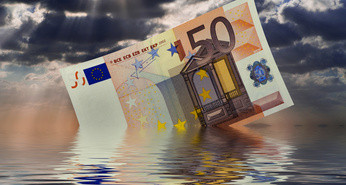Volatility is back. The foreign markets are in turmoil, after European Central Bank President Mario Draghi unleashed a triple-bore stimulus package yesterday morning, surprising participants who had not expected action until later in the year.
The institution lowered its benchmark lending rate from 0.15% to a new low of 0.05%, while pushing the overnight deposit rate further below the zero bound to a negative 0.2%, effectively increasing the cost that regional lenders must pay for keeping funds dormant. Draghi also articulated plans to begin purchasing asset-backed securities and covered bonds in October, eventually increasing the bank’s balance sheet from the current 2 trillion euro level toward 2.7 trillion euro in total.
The announcement smashed the euro through the critical 1.30 mark against the US dollar – a level that it had held since August last year. The 1.6% move was the worst in three years, and added to an eight-week string of losses. The impact shook many participants out of the summertime bliss, and then cascaded out into other markets where we continue to see adjustments occurring this morning.
The dollar is sharply stronger, after a series of positive data releases served to illustrate the contrast with the euro block. With the greenback on the rise, the numeraire effect took a toll on metal and energy prices, dulling gold’s glister and pulling front month crude prices back below $95 a barrel. Supported by a growing US economy and eroded by weakened commodity prices, the Canadian dollar is holding ground in the middle of its recent trading range.
While the euro is extremely unlikely to outperform the dollar in the longer run, we suspect that the market reaction may have been overblown. Draghi managed to startle many observers, but stopped short of the full-blown quantitative easing programme that most economists and politicians have been calling for. It appears that he has run into solid opposition in the central bank’s governing council, meaning that anything more substantive will be pushed well into next year. If so, short yields could rebound and the euro could see a minor snapback in the days to come.
That being said, the euro has now become a full-fledged funding currency for the carry trade, providing traders with cheap fuel to invest in other areas of the world. If yesterday’s announcement spurs another surge in flows to the emerging markets, the consequences could be downright scary.
Either way, it is clear that the predictability which governed markets through the summer has now disappeared. As you navigate the markets this fall, remember that a calm sea never made a skilled mariner. And have a great weekend!
Download our latest podcast here.



